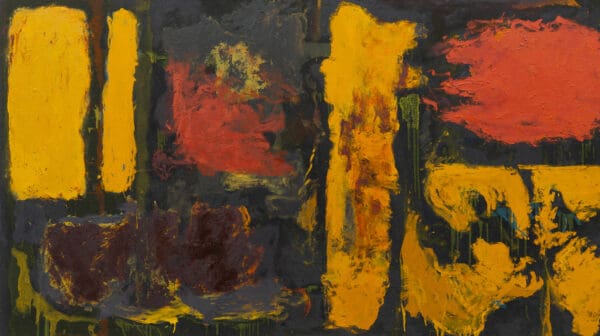
Making Space at the Table
NAP Contemporary’s group show, The Elephant Table, platforms six artists and voices—creating chaos, connection and conversation.
For many years, John Nicholson has been visiting factories as part of his art practice, getting assistance with making components for his bodies of work. He has been fascinated by these environments. One place – a bath and shower recess manufacturer – has continued to excite him over the long term, with his particular interest focused on the moulds used by the workers there. These extraordinary templates suggest many ideas to him, including imagining what Anish Kapoor sculptures might look like before being painted or doused with pigment.
While he is well-known for a diverse practice that includes freestanding works, he says he now seems to have, from a hands-on perspective, less and less to do with the physical construction of the objects he produces. Rather, he has been moving in the direction of an artist who designs ideas that manifest by being industrially fabricated.
“Initially my work was intensely hands-on, and I think over time you want to avoid much of that, as at times it can be so repetitive,” he says. He used to, for example, labour painstakingly over pieces of Perspex in order to achieve a very fine, glass-like surface.
While Nicholson’s new exhibition Drop downs moves away from the mirrored surfaces he has used in recent years, it enters more forcefully into celebrating the industrial, and thus the process of its own production – but it also grapples with the less obvious industrial practices almost everyone now encounters in daily life when they work on screens. Nicholson is not a person who elevates the status of computers; he refers to them as “just other machines”, not “technology”. “The computer seems to have this privilege – it is still a machine, but it is considered as ‘the’ machine.” It is responsible for changing most people’s lives, and used the world over, but is still essentially, an industrial tool.
No surprise, then, that one influence on Nicholson’s new works is the idea of the drop-down – those onscreen menus we click through multiple times each day while making various choices on our machines. Another starting point was chairs: as Nicholson has moved away from those days of sanding and routing, he has found himself spending vastly much more time sitting at tables with computers on them; but he has since migrated to more time sitting in an armchair thanks to the rise of the laptop.
Seeing these odd shapes hanging in groups on the walls of factories intrigued Nicholson. They also relate to the idea of “layering” – another thing we all do each day as we open multiple windows on our computers, with text documents, photo-editing files, and various internet sites and other programs sitting layer-upon-layer in front of each other on the screen.
Nicholson draws a logical connection between these layers and gaskets. “All pages [on a screen] are layers stacked chronologically on top of each other,” he observes. “It has that depth of interaction with the world. Our days are often spent in front of a screen trying to imagine a three-dimensional world through our very flat screen.”
On his own screen, Nicholson creates these intriguing gasket-like frame shapes, reminiscent of a geometrical puzzle, and layers them over each other in unexpected configurations with extraordinary combinations of colours. While they look flat on the computer screen, once they are laser-cut into plastic – at a factory, of course – and layered together, they become three dimensional, offering different visual experiences of depth when viewed face-on or from an angle to the side.
While it’s not a throw of the dice, as such, Nicholson says his choices of colours are somewhat random, even though he is conscious of his likes and dislikes. “I try to have each combination of colours at least in some way original.” And when you encounter some of these unexpected combinations, you know just what he means.
Drop downs
Jan Murphy Gallery
18 September—6 October